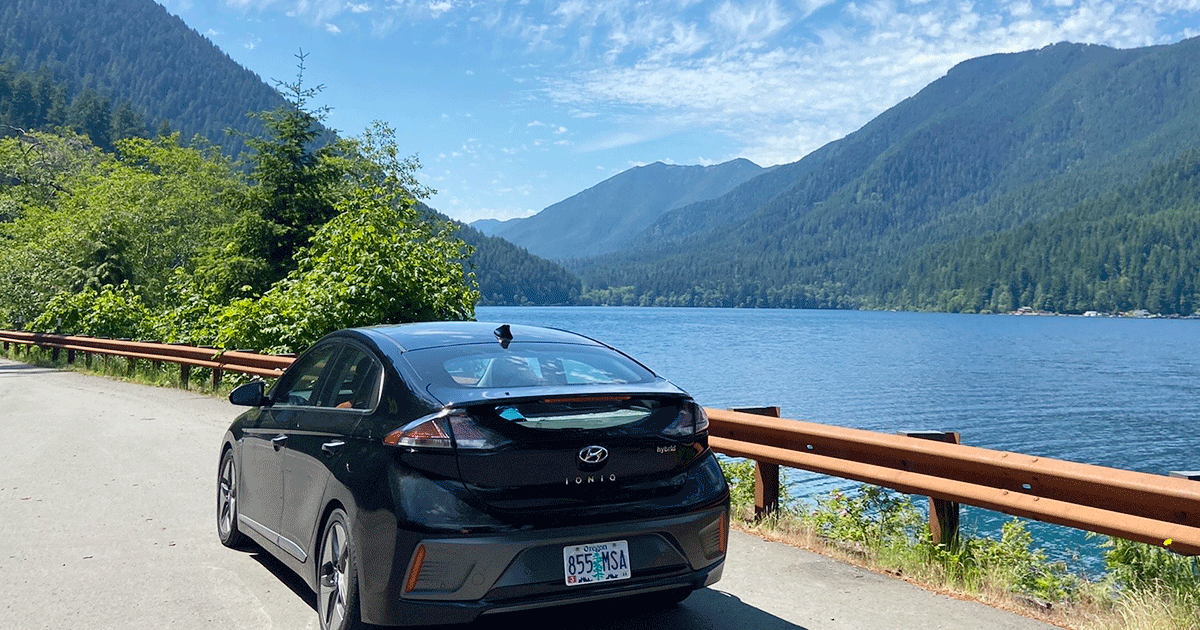
SEATTLE — As gasoline-electric hybrids go, the market hardly got to know the Ioniq, introduced in 2017, before Hyundai decided to pull the plug on the Toyota Prius rival.
Blame the market rush to full EVs, the pandemic or even the chip shortage that has left showrooms bare, but the Ioniq — a clever portmanteau that marries “ion” with “unique” — never seriously challenged the Prius.
With some good fortune, I recently spent some quality seat time in one and came away with a lot of respect for one of the auto industry’s shortest-lived models.
Late last month, my wife and I flew to Seattle-Tacoma International Airport as a starting point to explore Washington’s three national parks.
When making the rental-car reservation months ago, I selected the option that allowed us to pick from an aisle of vehicles. It was a bit of a gamble, but the last time we scored a Hyundai Venue and enjoyed it.
We knew the trip would require a lot of driving from one park to the next. We hoped to get something with decent fuel economy like a Venue but as the trip drew near, and fuel prices climbed higher, my wallet really hoped for something green.
We were somewhat disappointed when we were greeted with a selection of just Chevrolet Malibus. Eleven days behind the wheel of a midsize sedan not known for stellar fuel economy was not our first choice.
I managed to find a Malibu with just four miles on the odometer. Our suitcases with camping gear were jam packed in the second row and trunk when I heard a door shut across the way and looked up.
There it was: a freshly washed Ioniq hybrid.
I ran, not walked, to the hatchback to claim it. The odometer read 27,475, but I didn’t mind. I suppose it could have been much higher.
Perhaps by dumb luck or just good timing, we exited the garage in a black 2020 Ioniq Hybrid and headed toward Port Angeles, one of the entrances to Olympic National Park.
It’s fair to say a vehicle can make or break a big road trip.
It’s one thing when it’s your own car that you’re familiar with, but flying across the country and not knowing what you’ll be driving for 11 days is different.
While this job comes with the distinct privilege of getting to drive all types of new vehicles in a rotating press fleet, I had never driven an Ioniq Hybrid.
I banked that the Ioniq, an eco-car, would be worth it, and it didn’t disappoint.
We put the hatchback’s second-row seats down to load up gear. The expanded cargo area was far more accessible than the Malibu’s trunk would have been. For two people, it was a good, if not a little snug, fit.
The heated leather seats, sunroof and wireless charge pad for phones were features we used throughout the trip.
But the most striking benefit was fuel efficiency.
We racked up 1,320 miles on the Ioniq and averaged 51.5 mpg, somewhat remarkable for a car filled with luggage and subject to lots of high-altitude driving. Our total bill for gasoline: $129.81.
From the various ecosystems of Olympic National Park, to the mountain roads of Mount Rainier National Park to the twisty byway running through North Cascades National Park, the Ioniq was our trusty companion in seas of Subarus and decked-out vans at campgrounds, trailheads and lookout points.
While some of the switchbacks going up gave the Ioniq’s engine a workout, coming back down was typically a breeze and we sailed in EV mode when it automatically kicked on, which was more often than not.
It was fitting to enter a national park in EV mode, allowing us to take in the sights from a nearly quiet vehicle.
For as much as we enjoyed our time with the Ioniq, I’m not surprised it’s being dropped from Hyundai’s U.S. lineup.
We live in a crossover- and SUV-crazed market, and a hybrid hatchback not named Prius was likely not long for this world.
And Hyundai’s own lineup of hybrids has rapidly expanded in the U.S. since the Ioniq Hybrid first went on sale in 2017, which now includes Elantra and Sonata hybrid variants, but perhaps more importantly, the Tucson and Santa Fe crossovers.
The pair of crossovers don’t boast as impressive fuel economy as the Ioniq Hybrid. But either model would allow for more interior space and off-pavement confidence, both of which would have come in handy on this trip in particular.
It’s a tradition here at Automotive News to document discontinued models at the close of each calendar year. It’s going to be a disappointment to see the Ioniq Hybrid make the 2022 list.